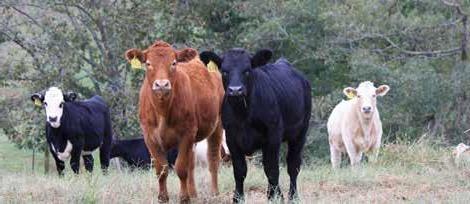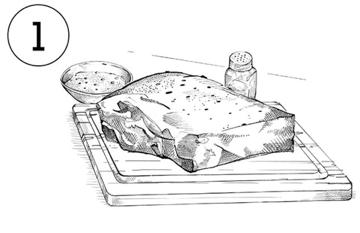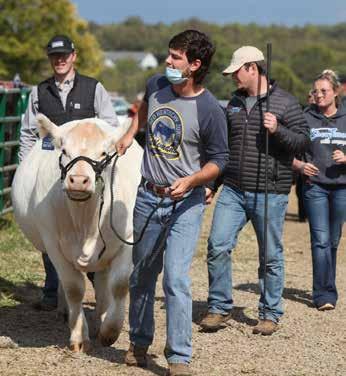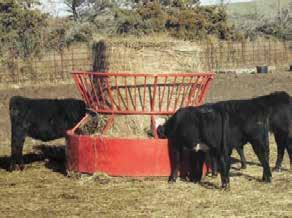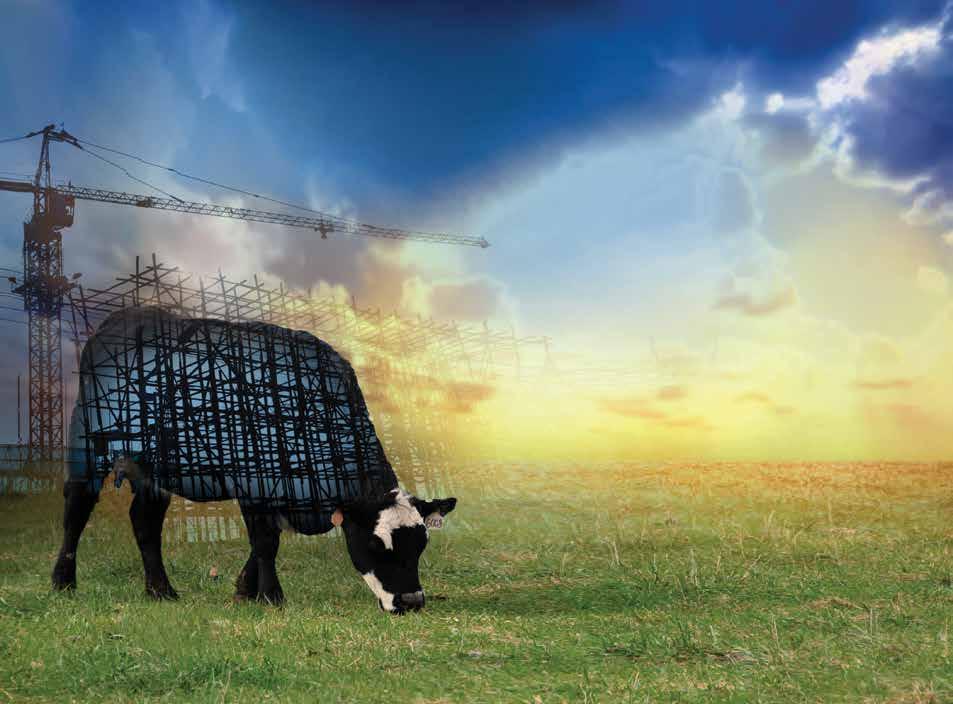FEATURE
7 5 T H I N G S YO U D I D N ’ T K N O W A B O U T B E E F Beef is a staple of American mealtime. Nutritious. Delicious. It is Americana on a plate. Producing beef requires the dedication of farmers and ranchers across the United States, and proper management of grazing animals can rebuild the health of pastures and rangelands. Since 1945, Noble Research Institute has supported farmers and ranchers in fostering land stewardship, improving the soil and producing one of the world’s favorite foods. In honor of Noble’s 75 years, below are 75 facts about beef.
Nebraska and South Dakota. 5. As of Jan. 1, 2020, there were 94.4 million head of cattle in the U.S. herd. That’s more than the populations of California, Texas, Florida and Mississippi combined. 6. 91% of beef farms and ranches are family-owned or individually operated. 7. The average farm size in 2017 was 441 acres. 8. The average herd size in 2017 was 43.5. 9. Pasture and rangeland represent 41% of land usage in the U.S. 10. Cattle and calves made up nearly 40% of cash receipts for animals and animal products in 2018. 11. About 16 U.S. presidents can say they have experience with farming or ranching, including Theodore Roosevelt, who at one point owned 5,000 cattle in the Dakota Badlands and championed conservation efforts during his presidency. 12. The U.S. is the world’s largest beef producer, followed by Brazil. A Global Presence 13. U.S. farmers and ranchers produce 18% of the world’s beef with only 8% of the world’s cattle.
21. The most popular beef products include ground beef, ribeye steak, strip steak and t-bone steak. 22. About 490 pounds of meat come from one 1,200-pound steer. 23. Beef is one of the most important dietary sources of iron. You’d have to eat three cups of raw spinach in order to get the same amount of iron in one 3-ounce serving of beef. 24. It’s also a source for other nutrients our bodies need, including protein, B vitamins, zinc, selenium, niacin, phosphorus, riboflavin and choline. It’s Not All Steak 25. More than 98% of a beef animal is used. 26. 60% of a beef animal goes to make products other than meat. 27. One cowhide can make 18 soccer balls or 20 footballs. 28. Medical products, like insulin and drugs used to help the body accept organ transplants, are made from cattle. 29. Gummy bears and marshmallows often contain gelatin, which can be made from cattle.
15. The U.S. ranked fourth in the world for amount of beef eaten per capita, at 79.3 pounds, in 2016.
18. They consume, on average, 112 pounds of beef per year.
2. One-third of all U.S. farms and ranches include cattle.
19. In 2018, U.S. consumers purchased 26.7 billion pounds of beef at foodservice and retail locations.
3. Beef cattle are raised in all 50 states. 4. The top five states with the most beef cows are Texas, Oklahoma, Missouri, COW COUNTRY •
NOVEMBER 2020
20. 70% of food service operators say that steak on the menu increases traffic.
35. A cow can smell odors from up to 6 miles away. 36. They only have a bottom set of teeth, which helps them eat grass. 37. And they have a rough, sandpaper-like tongue. Ruminating Grazers 38. All cattle spend most of their lives eating grasses and other forages on grazing lands. 39. They can eat about 40 pounds of food a day. 40. Cows are ruminants, which means they have four stomach compartments. The largest is called the rumen. 41. The ruminant digestive system enables a cow to acquire nutrients from grasses, which humans cannot. Other ruminants include sheep, deer and buffalo.
43. Cows were first domesticated about 10,000 years ago. 44. The ancestor of domesticated cattle is thought to be the now-extinct auroch, a horned, wild ox that was black and stood 6 feet tall at the shoulder.
Beef on the Dinner Plate
1. There are more than 800,000 ranchers and cattle producers in the U.S.
34. Calves weigh approximately 80 pounds at birth.
Beef Through History
16. Ahead of the U.S. in beef consumption per capita are Uruguay (124.2 pounds), Argentina (120.2 pounds) and Hong Kong (114.3 pounds). 17. Every day, 76 million Americans eat beef.
33. The gestation period for a cow, or the amount of time she is pregnant, is nine months — the same as a human.
42. As a ruminant, a cow digests plants by repeatedly regurgitating and chewing them up again. A cow “chews its cud” for about eight hours a day.
14. Japan, South Korea and Mexico are the top importers of U.S. beef.
Red, White and Beef
32. All “cows” are female. Before a female has a calf, she is called a heifer. She becomes a cow after giving birth. Males are called bulls or steers.
30. Other products that may be made from cattle include candles, paintbrushes, deodorant, dish soap and toilet papers. Cows Are Amazing Creatures 31. There are more than 800 different breeds of cattle in the world.
• A P U B L I C AT I O N O F T H E K E N T U C K Y C AT T L E M E N ’ S A S S O C I AT I O N
45. Spaniards brought the first cattle to the Americas in the late 15th and early 16th centuries. 46. Cattle were first brought to Jamestown, in what is now Virginia, from England in 1611, according to the writings of John Smith. CONTINUED ON PAGE 14 11


